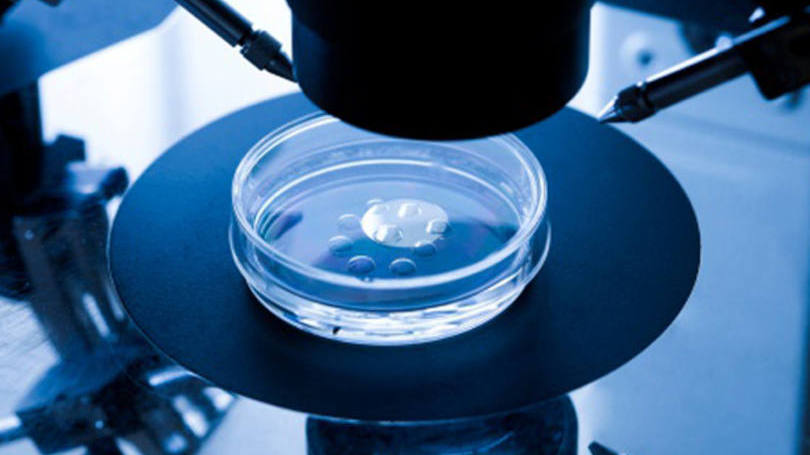As people continue to have children later in life, more will require assisted reproductive technology (ART), including egg freezing, embryo freezing, intrauterine insemination (IUI), and in vitro fertilization (IVF).
Although ART technologies have led to the birth of over seven million babies worldwide they aren’t an insurance policy to childbirth. For instance, using any fertility treatment doesn’t guarantee pregnancy, regardless of your age, health, or anything else.
If you have opted to utilise IVF, for instance, you would need to be certain that you are making decisions about these medical treatments with the most up-to-date and accurate information.
Each step of the IVF process is associated with some decrease in the number of eggs or embryos that make it to the next step, which is why each egg retrieved does not eventually equal one pregnancy. The chances that one egg retrieval cycle will eventually result in a live birth are at best just about 50 percent for people under 35 and decreases with advancing age.
Whatever your age, lifestyle, or level of health, there’s no absolute guarantee that IVF will result in pregnancy — but age does affect both the number of eggs and genetic quality of eggs a woman’s ovaries have.
While you can’t control things like age, there are things you can do that may boost your odds of success in IVF, like researching clinic success rates, keeping tabs on physical and mental health, and understanding any underlying condition. So, educate yourself on the data, but know that every person is unique. Have a conversation with your doctor. Do what’s right for you and your body.
The IVF journey will always begin with egg retrieval, whether from you or an egg donor.if you are using your eggs,you begin by taking hormonal medication to encourage follicle development, You take hormonal medication to encourage follicle development. The doctor retrieves the eggs before they are released for ovulation. For the egg retrieval procedure, doctors use a transvaginal ultrasound and a needle to get the developed eggs. You could opt to freeze your eggs to be used in the future, or proceed to egg fertilization.
At this step, fresh or thawed eggs are ready to meet the sperms that carry the second set of chromosomes for the embryo. A single egg along with thousands of sperm are placed in a petri dish in the lab. The embryologist will then do a “fertilization check” the following day to determine how many eggs were fertilized.
If you opt for Intracytoplasmic sperm injection (ICSI), The embryologist chooses a single, motile, normal-appearing sperm and injects it into the egg,encouraging fertilization to occur.
When “male factor” infertility or unexplained infertility is suspected to be at play, ICSI might be recommended because it circumvents possible issues introduced by low sperm count or motility.
Next, embryos go through development for five or six days post-fertilization to make it to the blastocyst stage — which means the embryo is ready for transfer, freezing, or genetic testing followed by freezing.
Eggs retrieved from people over 40 are more likely to result in embryos with genetic abnormalities that don’t make it to the blastocyst stage, and this is often part of what scientists and doctors are referring to when they talk about egg quality.
At the transfer and implantation stage, the blastocyst (or multiple blastocysts, depending on what you and your doctor decide) is transferred to the uterus with the hope that it’ll implant in the endometrium.
Soon after this implantation, blood levels of human chorionic gonadotropin (hCG) start increasing, which is the hormone detected in pregnancy tests.
Because there are so many steps and decision points between egg retrieval and a live birth, it’s tricky to point to a single number to best communicate your chances of success. However, we can get a sense of success rates at each step in the IVF funnel — and for the entire procedure to eventually end in a live birth.
Though your doctor might retrieve a certain number of eggs, only some of those eggs are mature enough to be used. Both the total number of eggs retrieved and percent of those eggs that are mature depend on age to varying extents.
Regardless of whether “conventional” insemination (a single egg with many sperm in a petri dish) or ICSI (an embryologist injects a single sperm into the egg) is chosen, about 75 percent of the mature eggs will get fertilized and make it to the initial embryo stage.
Of the mature eggs that are successfully fertilized, the numbers can vary significantly based on the clinic, age of the egg and sperm, and possible causes of infertility. Not all blastocysts that are transferred to the uterus will actually implant and result in a live birth. Age plays a role in how many blastocysts are more likely to implant and result in a live birth.
If you do IVF, you may need to do more than one transfer in the event that you are not pregnant after the first one — and you may ultimately do more transfers with banked embryos for subsequent pregnancies. Initial success rates represent how likely it is for one egg retrieval and the first, initial embryo transfer to result in a live birth.
If you’re under 35, the chances that one egg retrieval cycle will eventually result in a live birth (accounting for all transfers) is around 55 percent. For people ages 35-37, this falls to around 40 percent and falls lower as age increases.
It’s impossible to know your chances, you can only estimate them. Because there are so many factors that influence success rates, it’s impossible to tell any individual person exactly what their chances of having a live birth through IVF will be.
Just like the case of success rates when it comes to conception outside the context of IVF, there isn’t any magical supplement, behaviour, or trick to guarantee someone’s IVF journey will end in a live birth. That being said, there are actionable steps you can take to tilt the odds in your favor:
If you’re going to freeze eggs or embryos, sooner is better than later. Because both egg quality and quantity decrease with age, it’s better to undergo an egg retrieval sooner rather than later.
The quantity and quality of eggs you have decreases as you age, making your late 20s and 30s the best times to retrieve your eggs to maximize the number you’ll likely get and the likelihood they will be genetically “normal.”
Success rates of IVF go down with age too, but at no age does using any combination of fertility treatment options guarantee a pregnancy or live birth.
Understand that underlying conditions may decrease IVF success rates in different ways. Understanding these underlying conditions, as well as if there’s anything that can be done to minimize their effects on your chances of a live birth, can help you make more well-informed decisions throughout the process.
This piece will not be complete without the mention of the role of smoking and use of hard drugs/weed on the IVF success rate.
It is better to stay away from these habits while embarking on IVF as they are known to significantly lower the chances of conception by affecting both sperm and egg quality.





